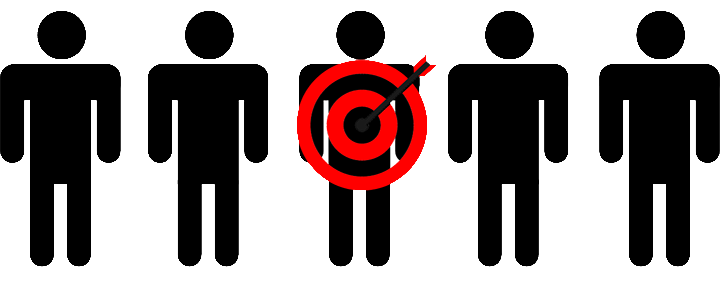Who Should You and Who Shouldn’t You Market To?

Successful marketing efforts should result in earnings that are in line with an expected advertising to sales ratio. Retail businesses calculate how much they spend to get a potential customer to walk through the door. Some businesses attempt to estimate the lifetime value of a customer relationship. The benefit of effective marketing communications is commonly tracked.
Most businesses using database marketing techniques are effectively targeting market segments that are likely to respond. The intensity of the communications aimed at these people is high and becoming increasingly more technologically sophisticated.
Gone are the days of indiscriminate carpet-bombing advertising with relatively benign messages. Now messages and offers are specific, perhaps even jolting, in their effort to stimulate a shopping response.
One group of people who are most valuable to marketers is also most likely to be negatively affected by new sales messages and offers: recent customers. People who just bought something at a price and with features that made them happy are in the post-purchase evaluation phase. They want to be happy with what they bought. You want them to be happy with what they bought. Recent customers don’t want to hear about a better product or price compared to the one they just bought.
Recent customers are likely to be future customers. They just need to be communicated to like customers, not prospects. It is harmful to treat a recent customer like a raw prospect. Inappropriate communications can make recent customers resentful, dissatisfied, product-returning problems.
Developing a customer suppression strategy is just as important as developing a prospect targeting strategy.
- How much time needs to be allowed between delivery and resuming general promotional communications?
- Can you communicate to recent customers about products that augment the experience they have with their most recent purchase, while excluding the product/category they bought? Analysis can often show product associations in purchasing patterns, in addition to designed product groupings.
- Are there follow-up communications to express customer appreciation?
- Do you need a different suppression policy for new customers versus returning customers?
Having an effective recent customer communication process that selectively targets and suppresses people from outgoing messages requires being able to link current sales data to database-driven marketing communications. Your sales accounting system is now also the basis for your marketing information system, responsible for both targeting and suppression.
If you need help with customer communication strategy, let’s talk.
Contributing Author:
Clinton Kennedy
Senior Database Marketing Analyst
